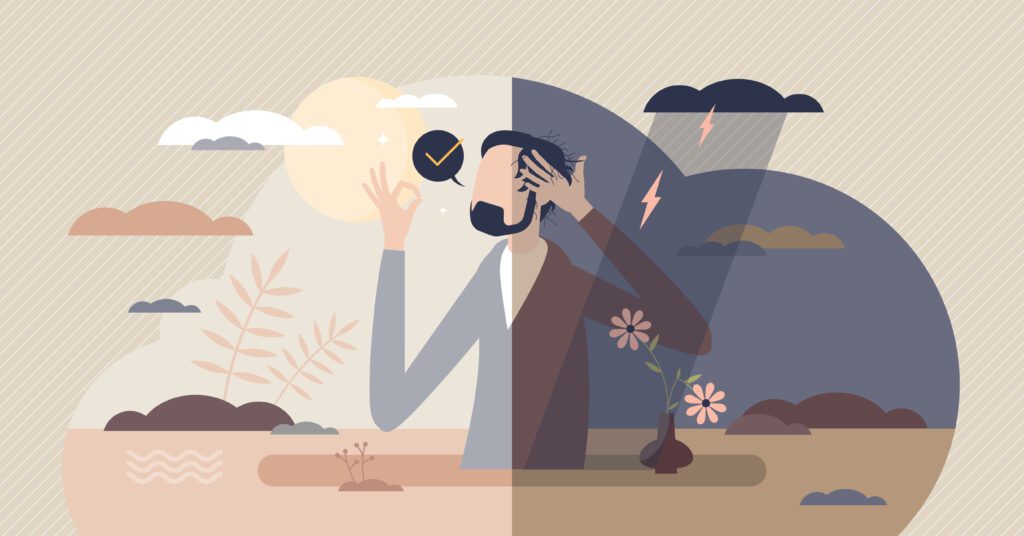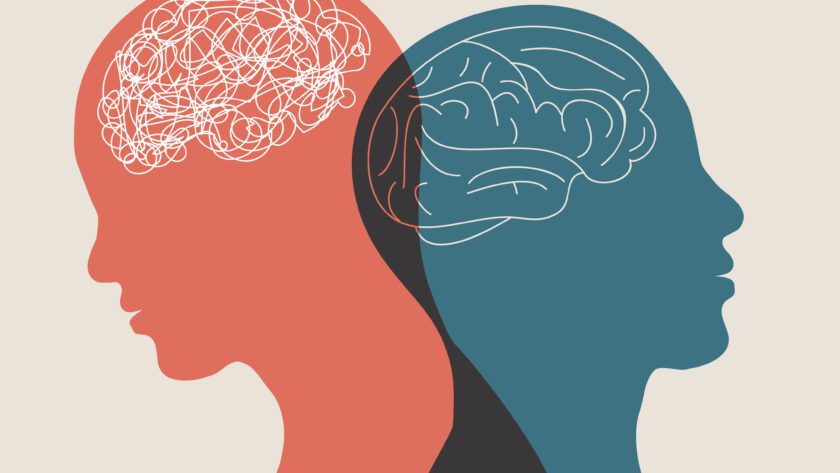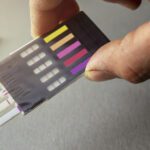It’s common for people suffering from alcohol or drug addiction to develop other mental health conditions, such as anxiety, depression, eating disorders, and more. That’s because their emotional and mental health is too unstable due to the persistent and uncontrollable use of substances.
The condition where alcohol and drug addiction simultaneously co-exist with a mental health condition is called dual diagnosis or co-occurring disorder. Substance abuse alone is extremely challenging to treat; what more if there’s another complicated condition to deal with?
Unfortunately, the number of people with dual diagnosis conditions continues to increase. In the United States, approximately 9.2 million adults are suffering from co-occurring disorders, according to the Substance Abuse and Mental Health Services Administration (SAMHSA) report.
On top of that, dual diagnosis condition isn’t easy to deal with, considering that there are two different conditions to address at the same time. If you or a loved one needs help, visit a rehabilitation facility to get your condition treated right away.
If you want to know more about how dual diagnosis conditions are treated, check out more information here. You may also continue reading this post to learn more.
What Are The Signs And Symptoms of Dual Diagnosis?
Before you understand how a dual diagnosis is treated, it’d be better to keep yourself informed about its signs and symptoms. This way, you’ll be able to tell yourself whether you’re suffering from one or not.
Here are the signs and symptoms of dual diagnosis:
- Having confusing thoughts
- Being sad and irritable most of the time
- Unstable mood shifts (mania)
- Being extremely fearful of anything (e.g., surroundings, relationships, objects, etc.)
- Being extremely aggressive to anyone
- Being distant from family and friends
- A sudden change in actions and behavior
- Inability to function without drugs
- Can’t let the day pass without drinking alcohol
- Abusing substances even in dangerous places
- Having suicidal thoughts
- Consistently denying having problems
- Inability to cope with daily life problems
- Withdrawing away from society (self-isolation)
- Having anger problems
If these symptoms show up now and then, it’s best to seek help from a psychiatrist or psychologist to sort things out and get treated as soon as possible. Denying the problem may end up catastrophically.
How Is Dual Diagnosis Treated?
In most cases of alcohol and drug addiction, the recovery process can be challenging, long, and painful. This is especially true when it comes to dual diagnosis. This is why healthcare professionals often recommend inpatient treatment since the patient will be dealing with two life-threatening conditions at the same time.
So, what is inpatient treatment, how does it differ from outpatient treatment, and what are its benefits? Will it be better than any other form of treatment?
Inpatient dual diagnosis treatment is an intensive rehabilitation program that requires the presence of the patient in a closed and well-guarded facility 24/7. Since it’s a residential treatment program, consider it a second home where you’ll be treated and monitored closely.

How Is Inpatient Different From Outpatient Treatment?
The difference between inpatient and outpatient treatment is the residential setup. Outpatient treatment programs don’t require the patient to be with the care provider 24/7.
In outpatient treatment, patients are required to attend scheduled treatment sessions. Each session may take a few hours—three to six hours—every day. This is ideal for patients with milder conditions, especially for those who try to balance attending work and treatment sessions.
However, outpatient treatment programs may not be ideal for patients with dual diagnoses, especially those with serious cases. Dual diagnosis requires an intensive program, one that’s capable of treating two different conditions at the same time.
Inpatient treatment programs provide the intensive care dual diagnosis patients need to recover and overcome substance abuse and mental health condition. Patients are under the care of in-house medical professionals, such as psychiatrists and nurses.
These medical professionals ensure that the patient takes the right medication and dosage at the right time. They’re on standby 24/7, so if you need help (e.g., pain and discomfort) or have questions, feel free to call them anytime.
What Are The Benefits Of Inpatient Dual Diagnosis Treatment?
When dealing with dual diagnosis conditions, it’s important to act as quickly and smartly as possible. Inpatient treatment offers the best possible care for a patient suffering from substance abuse and mental health condition at the same time.
Inpatient dual diagnosis treatment is ideal for faster and more effective recovery. It treats both conditions simultaneously while ensuring the patient’s well-being, so they can have a healthier and happier life.
Here are some benefits of receiving inpatient treatment for co-occurring disorders:
- Provides 24/7 Intensive Care: As mentioned earlier, patients receiving inpatient treatment have access to 24/7 professional care. Nurses and doctors remain on standby to provide intensive care to patients whenever necessary.
- Gives Patients Time To Recover: Inpatient treatment programs give patients plenty of time to heal and recover. Every step toward recovery is taken gradually. All you need to do is focus on the healing process and follow your doctors and therapists.
- Offers Supportive Environment: Rehabilitation facilities provide great support to people with co-occurring disorders. It’s a place free from physical and environmental triggers and where they can voice their opinions without being judged.
- Provides A Personalized Treatment Program: When it comes to dual diagnosis, no two people are alike, meaning every case is unique. Inpatient dual diagnosis treatment programs provide personalized treatment plans based on the specific needs of every patient.
- Builds Trust: Trust is an important factor that can affect the recovery process of a person with a co-occurring disorder. Inpatient dual diagnosis treatment helps build a tighter bond and stronger trust between the care provider and the patient.
- Provides Strong Peer Support: Inpatient treatment programs offer in-house support group sessions, which help patients build strong peer support from people experiencing the same condition. This gives them a chance to learn from other people’s experiences.
These are the reasons why inpatient treatment is ideal for treating people with dual diagnoses. It provides 24/7 intensive care and a supportive environment, which helps treat two different conditions at the same time.
What Are The Medications Used In Inpatient Treatment Facilities?
Medications are an important part of inpatient dual diagnosis treatment programs. During the treatment process, the patient’s medical history is carefully evaluated. After that, they’ll be given medications to reduce substance cravings and symptoms of depression, anxiety, and other mental health conditions.
Here are the common drugs used in treating dual diagnosis conditions:
- Anti-Anxiety Medications: As the name implies, these medications help reduce anxiety symptoms. These include benzodiazepines, selective serotonin reuptake inhibitors (SSRI), buspirone, beta blockers, bupropion, and hydroxyzine.
- Benzodiazepines – These are tranquilizers that provide relief against anxiety symptoms within 30 minutes. This makes them effective during panic attacks and severe anxiety episodes. However, it’s not recommended for long-term treatment.
- SSRIs – These are antidepressants for anxiety. They’re effective in alleviating anxiety symptoms but may take up to six weeks to effect. Thus, they’re not intended for immediate use.
- Buspirone – This mild tranquilizer relieves anxiety symptoms by increasing serotonin and decreasing dopamine.
- Beta Blockers – These medications block the effects of norepinephrine, a hormone that causes stress. They can control symptoms like increased heart rate, sweating, dizziness, and trembling voices.
- Hydroxyzine – This a medication used to treat allergic reactions, but it can be used to manage symptoms like increased nervousness, pressure, and tension. Also, it’s only used when symptoms show up.
- Antipsychotic Medications: Neuroleptics and major tranquilizers are used to alleviate the symptoms of bipolar disorder and schizophrenia, such as delusions and hallucinations.
- Anti-Addiction Medications: The main purpose of anti-addiction medication is to reduce withdrawal symptoms and cravings. These are common for people who stop using drugs and alcohol. The most common drugs include methadone, naltrexone, topiramate, and acamprosate.
- Methadone – This is a common drug often prescribed to people suffering from addiction.
- Naltrexone – This is ideal for people addicted to both alcohol and drugs.
- Topiramate – This drug is ideal for reducing symptoms related to drug addiction.
- Acamprosate – This is an anti-craving medication. It stops craving by blocking a neurotransmitter called gamma-aminobutyric acid.
It’s important to understand that taking medications may cause side effects, such as:
- Drowsiness
- Constipation
- Headache
- Confusion
- Nausea
- Insomnia
- Loss of appetite
- Fatigue
- Diarrhea
- Sleepiness
- Nervousness
- Weight gain
Side effects are common when taking medications; however, it’s not normal if they persist after some time. If they do, make sure to inform your care provider immediately to make adjustments to your current medications.
What Is The Inpatient Treatment Process?
In most cases, inpatient dual diagnosis treatment processes are divided into four steps: detoxification, assessment, treatment, and aftercare.
- Step 1: Detoxification
Detoxification is the process of eliminating traces of alcohol and drugs in the body. Its main purpose is to help people alleviate withdrawal symptoms when they stop relying on such substances.
The length of detox may take days, weeks, or even months, depending on the following factors:
- The type of substances used (e.g., benzodiazepines may take at least two weeks or even longer)
- The duration of addiction
- How someone uses substances (e.g., swallowing, smoking, or injecting)
- The amount one has taken (the higher the amount, the longer the detox process)
- Underlying medical conditions
- Family history
Also, take note of the side effects one may experience during detox. These include:
- Anxiety
- Nervousness
- Mood swings
- Poor sleep
- Lack of focus
- Insomnia
- Discomfort
If you want to complete the process in a shorter period, ask your doctor about rapid detox. This is a faster way to eliminate drugs and alcohol from the body while preventing withdrawal symptoms. However, it’s expensive and can be dangerous.
Here are some risks to keep in mind:
- Infection
- Heart attack
- Paranoia
- Choking
- Nausea and vomiting
- Death
The risks of rapid detox often outweigh its benefits. So, before you proceed, understand the process and ask your doctor if it’s the best course to take.
- Step 2: The Assessment
Once you’re done with the detoxification process, your medical history and substance abuse will be evaluated. This will help your doctors determine the right treatment program that fits your needs based on your physical, emotional, and mental health.
- Step 3: The Treatment
The treatment process will try to address both substance abuse and mental health issues simultaneously. You’ll work with psychiatrists (for medications) and psychologists (for psychotherapeutic sessions).
Common psychotherapies involved in treating dual diagnosis often include:
- Cognitive Behavioral Therapy (CBT): CBT helps people identify negative, irrational, and destructive thought patterns and behaviors and replace them with positive and realistic ones.
- Dialectical Behavior Therapy (DBT): DBT helps people accept their condition and teaches them how to manage their feelings and emotions. It can be used to address both addiction and mental health issues.
- Twelve-Step Programs: These programs can be accessed by participating in essential support groups like Alcoholics Anonymous (AA) and Narcotics Anonymous (NA). These steps are designed to help people abstain from using alcohol and drugs.
- Family Counseling: This focuses on the idea that the family is involved in one’s addiction. It involves the family members of the addict and ensures that they understand their role in the treatment process.
- Motivational Interviewing (MI): MI is a popular therapy for a wide range of dual diagnosis cases. It focuses on encouraging and supporting people in a positive way by identifying the things that can motivate them to recover.
- Contingency Management (CM): CM is based on the principle of operant conditioning. It motivates people to complete the recovery process by giving them incentives (e.g., movie tickets, discount coupons, etc.) for every positive action done.
Ask your psychologist to find out the best therapy for your condition. That’s because not all of them may fit your needs.
- Step 4: The Aftercare
After the treatment, you need to focus on taking care of yourself. You need to avoid people, places, and objects that can trigger your cravings and mental health. Also, you still need to keep in touch with your doctor and therapist to ensure continuous recovery.
Final Words
Dual diagnosis is a condition where substance abuse co-exists with a mental health disorder. It can be difficult to address since there are two different conditions you have to deal with at the same time. This is why inpatient treatment is the best option. It provides intensive care and a supportive environment to help people recover as soon as possible.
If you or a loved one suffers from a dual diagnosis, visit your nearest rehabilitation facility and ask for help immediately. Delaying the treatment may lead to unwanted issues and complications.




